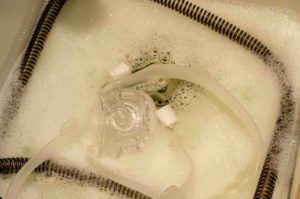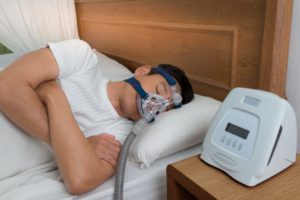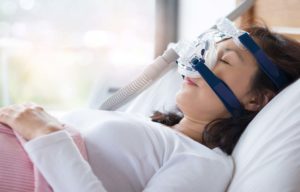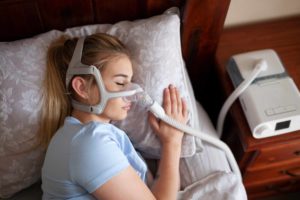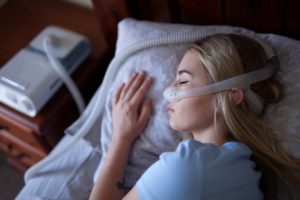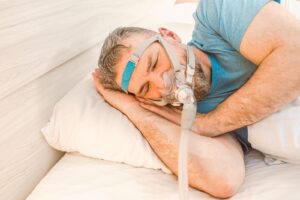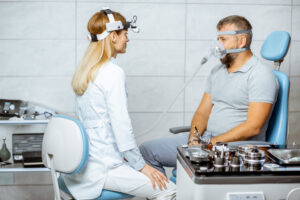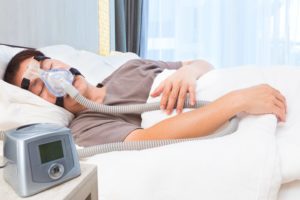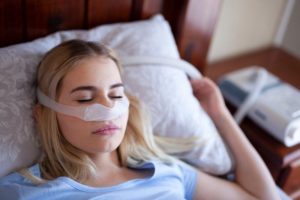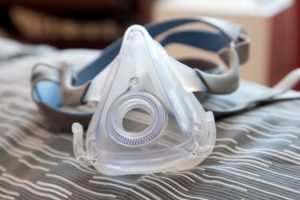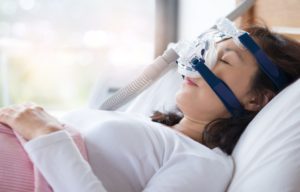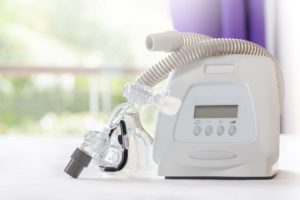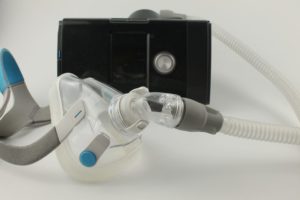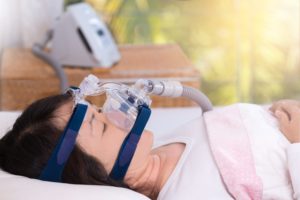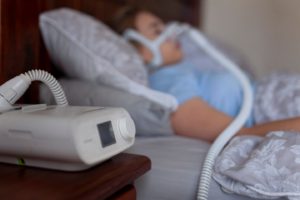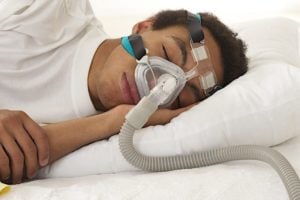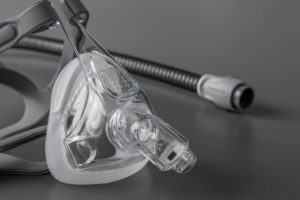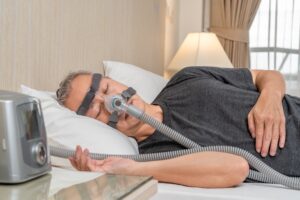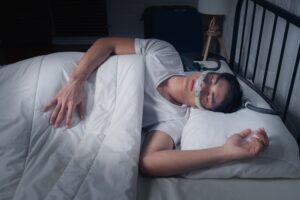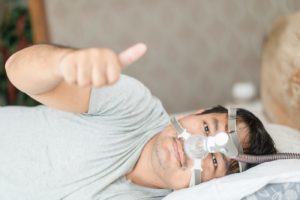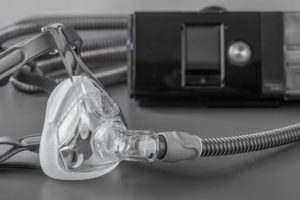When you buy through our links, we may earn a commission. Products or services may be offered by an affiliated entity. Learn more.
What Are Micro CPAP Devices and Do They Work?
The standard treatment for obstructive sleep apnea (OSA) is continuous positive airway pressure. CPAP therapy keeps airways open by delivering pressurized air to the nose and mouth or just the nose. CPAP therapy can be very effective, but many people with OSA find the devices uncomfortable to wear overnight.
Micro CPAP technology is being developed as an alternative to traditional CPAP. We’ll discuss the design concept behind micro CPAP devices, how they compare to traditional CPAP machines, and whether they may be effective for treating OSA.

Exploring CPAP Machines — But Haven’t Been Tested Yet?
Start with our easy, at-home sleep test. It’s stress-free and effective. Get results within a few days.
What Is a Micro CPAP Device?
To date, a working micro CPAP prototype has yet to be completed. While certain products are currently marketed as micro CPAP devices, these items have not received approval from the Food and Drug Administration as a treatment for OSA.
A micro CPAP device is intended to be less invasive than traditional CPAP machines, which some find cumbersome, noisy, and restrictive. The company developing the technology is working to produce a compact design that is maskless, hoseless, and battery powered.
How Micro CPAP Devices Differ From Traditional CPAP Machines
A traditional CPAP machine consists of several components:
- A tabletop unit that plugs into a wall outlet and generates continuous pressure
- A mask that fits over the sleeper’s face and delivers pressurized air to the airways
- A hose that connects the mask to the tabletop machine
To use a traditional CPAP device, sleepers must connect all the components, adjust the mask, turn on the device, and find a comfortable sleep position. Traditional CPAP machines also require regular maintenance, including changing the interior air filter and cleaning and sanitizing the hose and mask.
In comparison, the micro CPAP design in development features silicon nose buds that sit inside the nostrils. The body of the device rests just below the nose and contains the inhalation and exhalation vents and electronic components intended to generate positive airway pressure.
How a Micro CPAP Device Works
The idea behind micro CPAP devices is to eliminate the need for a tabletop CPAP machine and bulky masks and hoses to deliver continuous positive airway pressure. To do this, the company designing the technology is developing interior components called microblowers. These tiny displacement pumps are intended to create positive airway pressure by using electrostatic charge.
Similar to a bellows that fans the flames of a fire, the design sucks air in one end and forces it out the other end of each microblower. The single-use micro CPAP device is designed to be battery powered, with an intended battery life of eight hours.
Do Micro CPAP Devices Work as a Treatment for OSA?
Since micro CPAP technology is still in the development stage, it is difficult to ascertain whether it will be approved as an effective treatment for obstructive sleep apnea. Based on the information currently available, the device appears to have several shortcomings compared with traditional CPAP machines.
Pressure Settings
CPAP therapy requires a doctor’s prescription that includes a specific pressure setting based on the individual’s needs. CPAP pressure settings are measured in centimeters of water pressure (cm H2O). Most CPAP machines have pressure settings ranging from 4 to 20 cm H2O, though some go higher.
It is unclear if micro CPAP devices will be able to deliver this same range of pressure. The company developing the technology claims that it will be capable of reaching more than 20 cm H2O. However, the last technical update from the company, released in February 2020, showed that the microblowers had been demonstrated to blow air at around 5 cm H2O — far below the level needed to bring the product to market. No public updates have been provided since, leaving the status of the technology uncertain.
Pressure Control
The company designing micro CPAP technology has provided conflicting information regarding how the device will regulate pressure. In one section of its website, the company claims that the initial iteration of the device will be manufactured with a full range of pressure options corresponding to the user’s prescribed pressure number, similar to how contact lenses are customized in power increments.
However, another part of the site states that the initial device prototype will have a built-in pressure sensor to automatically adjust pressure based on the user’s breathing patterns, comparable to automatic positive airway pressure (APAP) machines. This lack of clarity makes it difficult to assess the device’s potential viability.
Humidity Control
Many people experience side effects from CPAP therapy such as dry mouth or dry nasal passages. To mitigate these issues, some CPAP machines are equipped with humidifiers to add moisture to the pressurized air. The design of the micro CPAP prototype doesn’t address humidification needs that may occur from regular use.
Device Disposal
The in-progress micro CPAP prototype is a single-use device. While the company developing the technology has suggested that it could implement a recycling program similar to printer ink cartridges, it has not detailed how this would be accomplished with a battery-powered device that requires daily replacement.
Have Micro CPAP Devices Received FDA Approval?
Micro CPAP devices are not currently approved by the FDA as a treatment for sleep apnea. To ensure consumer safety, the FDA uses a rigorous process of testing and review for new medical devices. Since a working prototype does not currently exist, it is difficult to predict when or if the device will receive approval.

Still have questions? Ask our community!
Join our Sleep Care Community — a trusted hub of product specialists, sleep health professionals, and people just like you. Whether you’re searching for the perfect mattress or need expert sleep advice, we’ve got you covered. Get personalized guidance from the experts who know sleep best.



